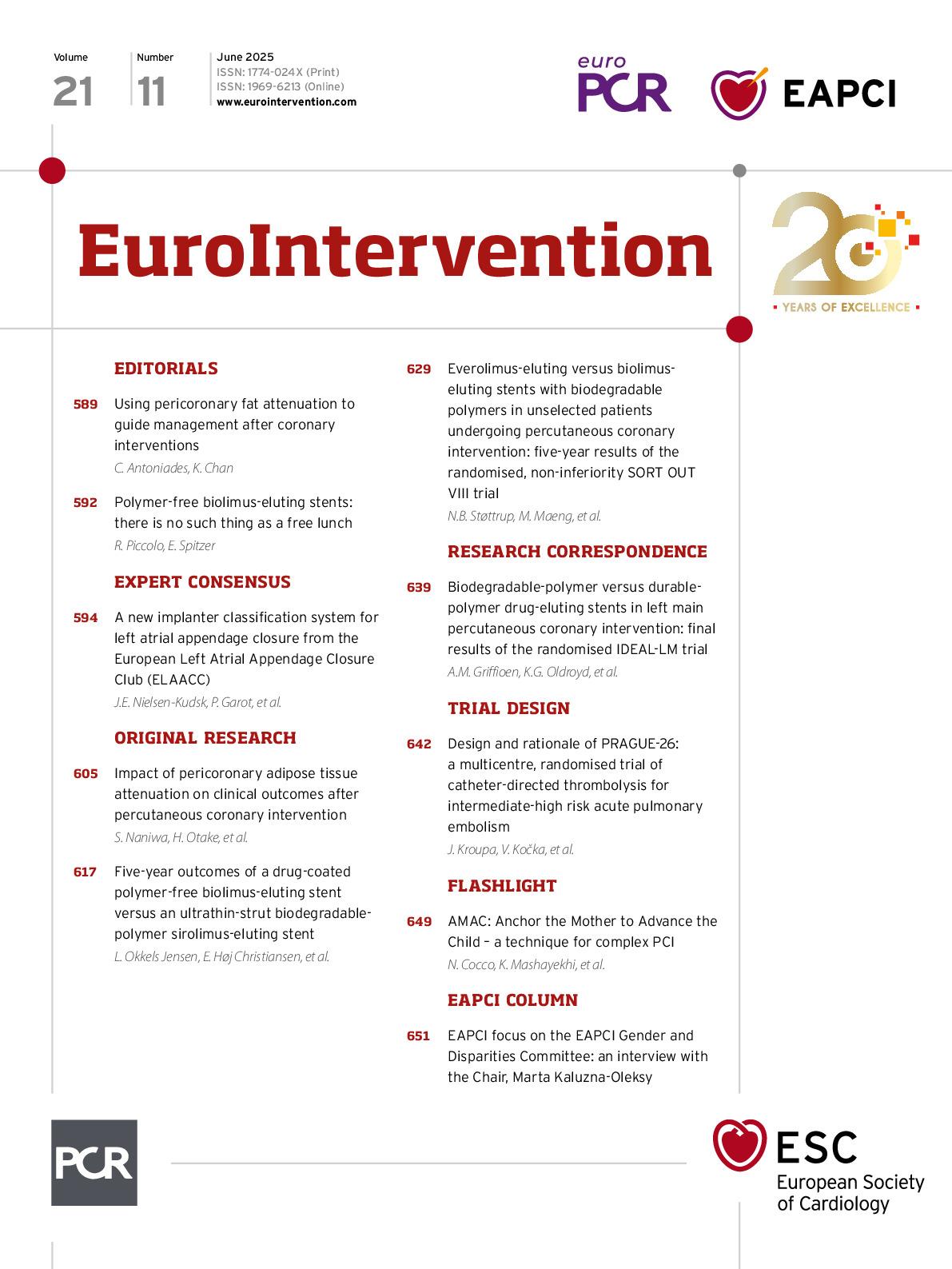Abstract
Background: Pericoronary adipose tissue (PCAT) attenuation, measured using coronary computed tomography angiography (cCTA), is a potential marker of coronary inflammation.
Aims: We aimed to examine the association between coronary inflammation, as assessed by measuring PCAT attenuation before percutaneous coronary intervention (PCI), and clinical outcomes of PCI using current-generation drug-eluting stents (DES).
Methods: We retrospectively studied consecutive patients who underwent cCTA before PCI with current-generation DES. Adverse plaque characteristics, calcified plaque (CP) burden, and PCAT attenuation of the proximal right coronary artery (PCATRCA) were assessed using cCTA. The primary outcome was a patient-oriented composite endpoint (PoCE), including cardiovascular death, non-fatal myocardial infarction, any revascularisation, and stroke.
Results: During a median follow-up of 1,540 days, 77 of 490 patients experienced PoCE. Patients with PoCE had higher PCATRCA (−76.3±6.4 Hounsfield units [HU] vs −82.5±8.1 HU; p<0.001). Multivariable analysis showed that the presence of adverse plaque, greater CP burden and higher PCATRCA were independently associated with PoCE (hazard ratio [HR] 2.05, 95% confidence interval [CI]: 1.26-3.34; p=0.004; HR 1.04, 95% CI: 1.02-1.07; p=0.002; and HR 2.20, 95% CI: 1.63-2.97; p<0.001, respectively). PoCE incidence was 3.9 times higher in patients with high PCATRCA (≥−79.9 HU) than those with low PCATRCA (<−79.9 HU). Adding PCATRCA to traditional cardiovascular risk factors and cCTA findings (adverse plaque and CP burdens) improved the predictive and reclassification abilities for PoCE.
Conclusions: High PCATRCA was independently associated with PoCE after PCI using current-generation DES. Combining PCATRCA with traditional cardiovascular risk factors and cCTA findings may enhance risk assessment for PoCE after PCI.
Sign up for free!
Join us for free and access thousands of articles from EuroIntervention, as well as presentations, videos, cases from PCRonline.com

